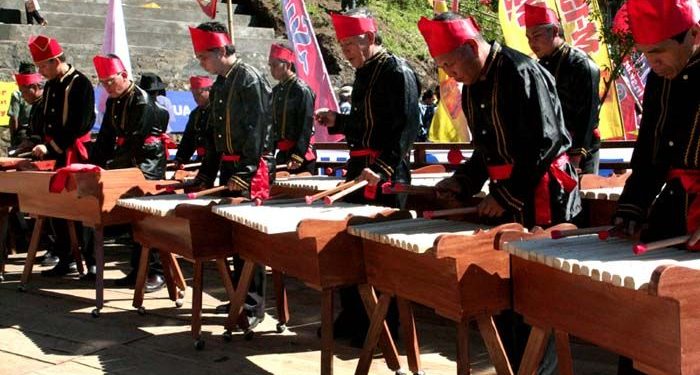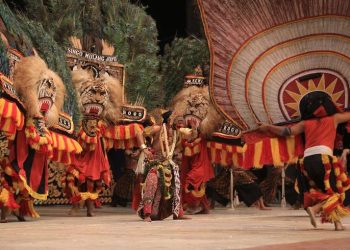Jakarta, Indonesia Sentinel — Kolintang is a traditional musical instrument from North Sulawesi, Indonesia, known for its unique blend of percussive and melodic sounds. This wooden xylophone-like instrument is typically played in an ensemble, showcasing its cultural significance as a source of regional pride.
Originating from the Minahasa region of North Sulawesi, the name “kolintang” is derived from the sounds it produces: “tong” for low notes, “ting” for high notes, and “tang” for middle notes. These distinctive tones give the instrument its name, which has been passed down through generations.
Initially, kolintang was purely acoustic, crafted from dense, horizontally-grained hardwoods such as telur wood, bandaran, benuang, and kakinik. Today, it has evolved into an electronic version, incorporating digital technology that expands its use in modern musical performances. This transformation has not only altered its shape and role but also broadened its appeal beyond traditional settings.
In the past, kolintang was primarily used for religious ceremonies, weddings, and funerals. Now, it has found a place in contemporary music, serving as a tool for cultural preservation and entertainment. The instrument can now be seen in both formal and informal events, enriching local arts and promoting regional heritage.
A traditional kolintang set consists of 6 to 12 wooden bars arranged on a rack of varying sizes, each producing different pitches from low to high. The instrument is categorized into several types based on the sounds it generates, all named in the Minahasa language: loway (bass), cella (cello), karua (tenor 1), karua rua (tenor 2), uner (alto 1), uner rua (alto 2), katelu (ukulele), ina esa (melody 1), ina rua (melody 2), and ina taweng (melody 3).
The Cultural Significance of Kolintang
Kolintang is not merely an instrument for musical accompaniment; it plays a vital role in Minahasan cultural events such as traditional dances, local songs, and social gatherings. It also serves as a medium for communication, community bonding, and fostering a sense of unity among the Minahasa people.
Minister of Culture Fadli Zon to Nominate 3 Indonesia Traditional Cultures for UNESCO
The instrument is often featured in religious and cultural ceremonies, including weddings, house blessings, and harvest festivals. In some traditional practices, kolintang symbolizes authority and social status, emphasizing its deeper cultural importance.
How to Play Kolintang
Playing kolintang requires a set of specialized sticks known as mallets, typically made of wood with padded cloth tips to soften the sound. Three mallets are used: one held in the left hand and two in the right hand, allowing the player to strike multiple notes simultaneously. Mastery of the instrument involves not only technical skill but also an appreciation for its historical and cultural context.
Preserving a Musical Legacy
Kolintang remains an enduring symbol of Indonesia’s rich cultural tapestry. Its evolution from a traditional acoustic instrument to a modern adaptation reflects a blend of heritage and innovation. Preserving this musical legacy is essential not only for cultural enrichment but also for fostering a deeper understanding of Indonesia’s diverse artistic traditions.
(Raidi/Agung)

























